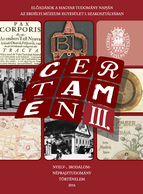
Képmelléklet
List of illustrations to the articles of the following authors: Pozsony Ferenc, T. Szabó Csilla, Tőtős Áron, Ferenczi Szilárd, Wellmann László, Murádin János Kristóf.
More...We kindly inform you that, as long as the subject affiliation of our 300.000+ articles is in progress, you might get unsufficient or no results on your third level or second level search. In this case, please broaden your search criteria.

List of illustrations to the articles of the following authors: Pozsony Ferenc, T. Szabó Csilla, Tőtős Áron, Ferenczi Szilárd, Wellmann László, Murádin János Kristóf.
More...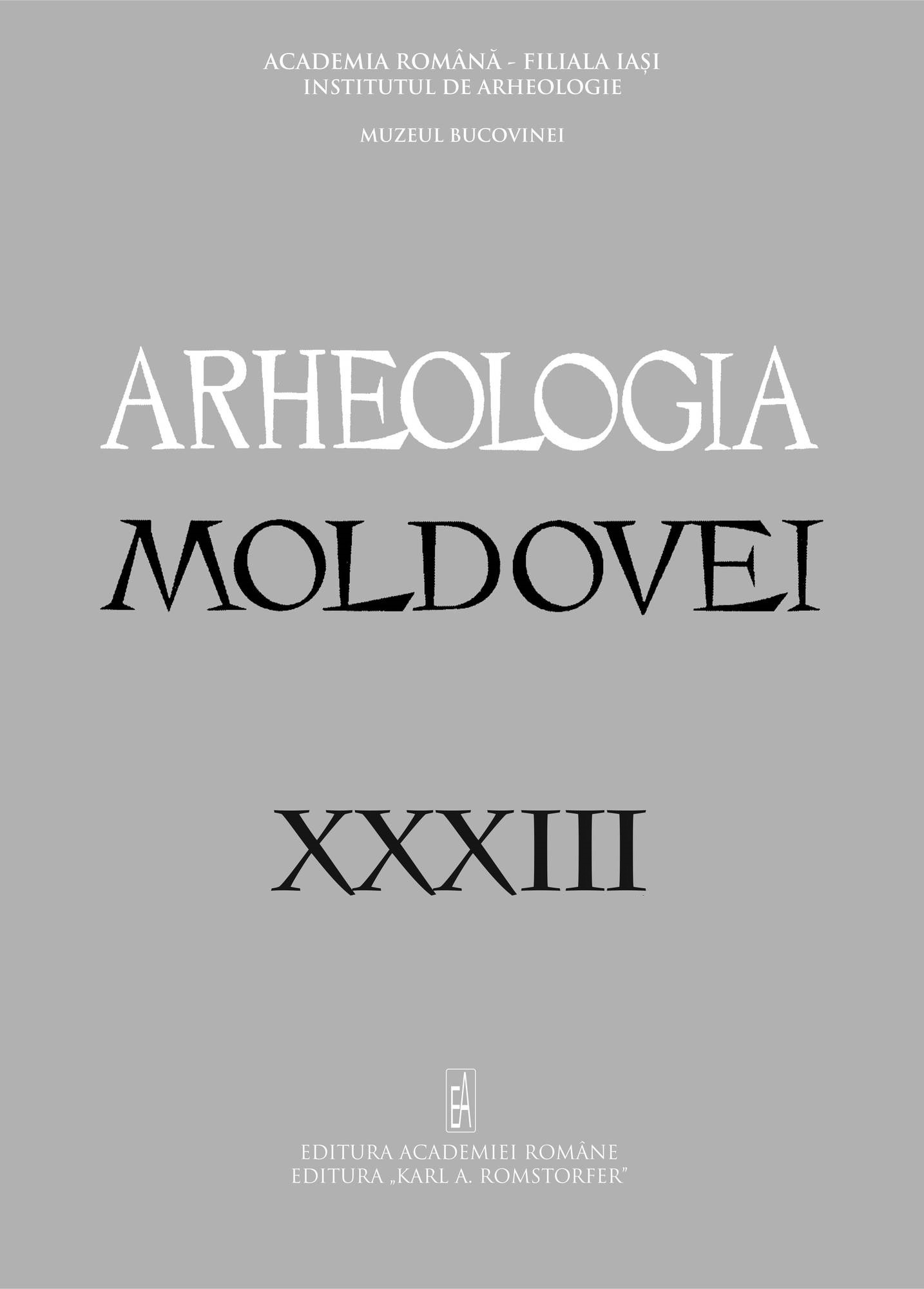
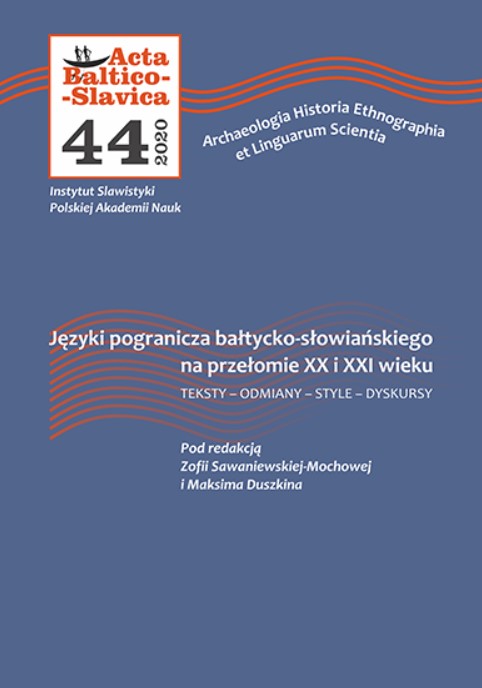
The author assumes that KRESY (former Polish Eastern Borderlands) is a characteristic culturem of Polish culture. He considers culturems as concepts which are important for self-identification, and assumes that identity has a shape of a narrative. Consequently, he recognises that the culturem KRESY may have a significant impact on shaping the identity of people associated with the former lands of the Second Polish Republic, so-called Kresy Wschodnie. This article analyses three oral history texts from the author’s files. They reveal a strong connection between the image of KRESY and the Polish home (especially the manor house) and the roots of Kresowiak identity in national liberation traditions (especially the January Uprising). This image is characterised by a certain degree of idealisation: KRESY are viewed as a place of peaceful coexistence of numerous nations and cultures. The image of KRESY has changed over time. After the Polish-Bolshevik war, it was a place of lawlessness; after the creation of the Border Protection Corps (Korpus Ochrony Pogranicza, KOP) it was a place of peace. The Second World War was a turning point marking the end of Polish Kresy.
More...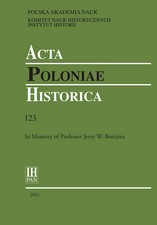
Review of: Mihai-D. Grigore- Gábor Kármán, Confession and Politics in the Principality of Transylvania 1644–1657, Göttingen, 2020, Vandenhoeck & Ruprecht, 302 pp.; series: Refo500 Academic Studies, 6 Łukasz Hajdrych - Kateryna Dysa, Ukrainian Witchcraft Trials. Volhynia, Podolia, and Ruthenia, 17th–18th Centuries, Budapest, 2020, Central European University Press, 264 pp., 22 ills Mikołaj Getka-Kenig - Tomasz Opaliński, Stan chłopski w Księstwie Warszawskim w świetle akt sądowych [The Peasant Estate in the Duchy of Warsaw, in Light of Court Files], Warszawa, 2020, Wydawnictwo DiG, 196 pp., tables, list of abbreviations, bibliog., annexes Malte Rolf - Aleksander Łupienko, Order in the Streets: The Political History of Warsaw’s Public Space in the First Half of the 19th Century, transl. from Polish by Jarek Garliński, Berlin, 2020, Peter Lang GmbH, 272 pp.; ills, bibliog., index; series: Geschichte – Erinnerung – Politik. Studies in History, Memory and Politics, 29 Aleksander Łupienko - Beate Stö rtkuhl and Rafał Makała (eds), Nicht nur Bauhaus: Netzwerke der Moderne in Mitteleuropa / Not Just Bauhaus: Networks of Modernity in Central Europe, Berlin, 2020, De Gruyter Oldenbourg, 400 pp., 200 ills; series: Schriften des Bundesinstituts für Kultur und Geschichte der Deutschen im östlichen Europa, 77 Grzegorz Krzywiec - Nils Fehlhaber, Netzwerke der “Achse Berlin–Rom”. Die Zusammenarbeit faschistischer und nationalsozialistischer Führungseliten 1933–1943, Köln, 2019, Böhlau Verlag, 343 pp.; series: Italien in der Moderne Aleksei Lokhmatov - Izabela Wagner, Bauman: A Biography, Cambridge, 2020, Polity Press, 500 pp., bibliog., appendix Rafał Stobiecki - Anna Sosnowska, Explaining Economic Backwardness. Post-1945 Polish Historians on Eastern Europe, Budapest–New York, 2019, CEU Press, 372 pp., bibliog., name and subject indices Natalia Jarska - Katarzyna Stańczak-Wiślicz, Piotr Perkowski, Małgorzata Fidelis, and Barbara Klich-Kluczewska, Kobiety w Polsce 1945–1989: Nowoczesność – równouprawnienie – komunizm [Women in Poland 1945–1989: Modernity – Equality – Communism], Kraków, 2020, Universitas, 520 pp., bibliog., ills and list thereof, index of personal names Anna Sosnowska - Béla Tomka, Austerities and Aspirations. A Comparative History of Growth, Consumption, and Quality of Life in East Central Europe since 1945, New York, 2020, Central European University Press, 456 pp., appendix, notes, bibliog., index
More...
Zbigniew Herbert was one of the most outstanding Polish poets of the twentieth century. The article presents an analysis of three monographs devoted to him, written by Joanna Siedlecka, Andrzej Franaszek, and Rafał Żebrowski. The editions of his correspondence and memories of the poet are taken into consideration. Differences in the depiction of Herbert’s biography are shown against the background of disputes about the recent history.
More...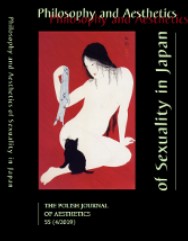
The objectification of women in art and pornography is often seen as harmful. However, Martha Nussbaum’s articulation of seven types of objectification shows how it can be benign or positive depending on the context. This paper utilizes Nussbaum’s ideas to examine the objectification of women depicted in shunga, sexually explicit art created in 17th-19th century Japan, and how it differs from European art of the same period. It also explores related issues of equality, sexuality, and agency.
More...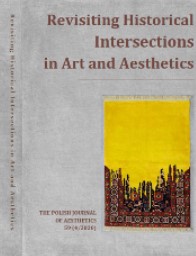
The long reception of the doll Olimpia in E. T. A. Hoffmann’s The Sandmann represents the change of the ideologies concerning androids. The paper focuses on three transformations of the Romantic creature in 20th century Avant-garde art, namely, in works by Max Ernst, Oskar Schlemmer, and Cindy Sherman. It is aimed at showing how the machine myth of the 18th and 19th centuries, closely related to Gothic Romanticism, could become an important part of 20th century art.
More...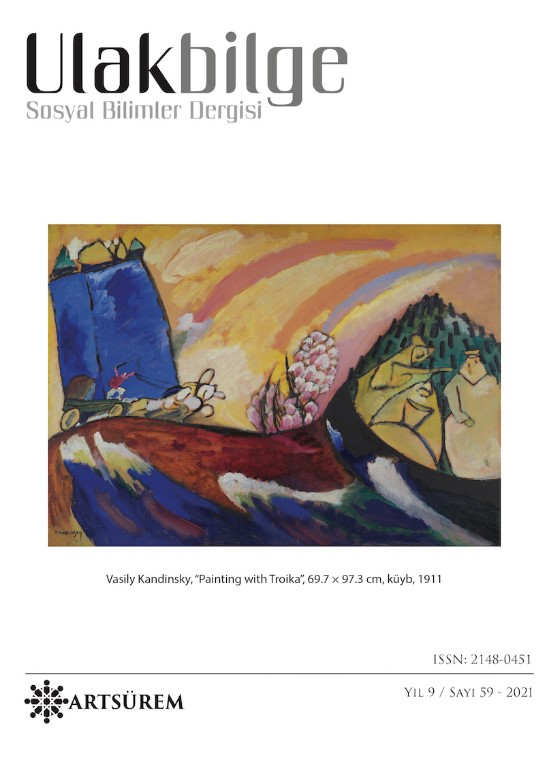
Painter Osman Hamdi Bey, who lived in the last period of the Ottoman Empire, is a successful painter, sculptor, archaeologist, art historian, educator and statesman. He has taken the early modernization steps of Turkish painting. His contributions to Turkish art and culture cannot be denied. He was the first painter to do figüre and portrait works in his period. Osman Hamdi Bey tried to explain the East in the most accurate way with his Orientalist-style paintings on the subject of important historical structures in Turkey and tried to break the prejudices of the West over the East. In his Works, he included in particular the splendor of the East. Because he uses sections of historical sites one-on-one in some of his Works, these Works are document. In some of his Works, he also provides information about Turkish culture and life through fiction. The artist often included masques, shrines and mansions in his paintings. In his figüre studies, he glorified women in everyday and social life by using women. He tried to emphasize the place of women in society. In his female figures, he portrayed the woman as cultural, social and well- groomed, reading rather than being meta. He used his wife and daughter as models in the female figures he used. In this study, four paintings of Osman Hamdi Bey’s women- themed Works were examined through semiotic analysis and an attempt was made to determine the unity of language, suject and style used in the paintings.
More...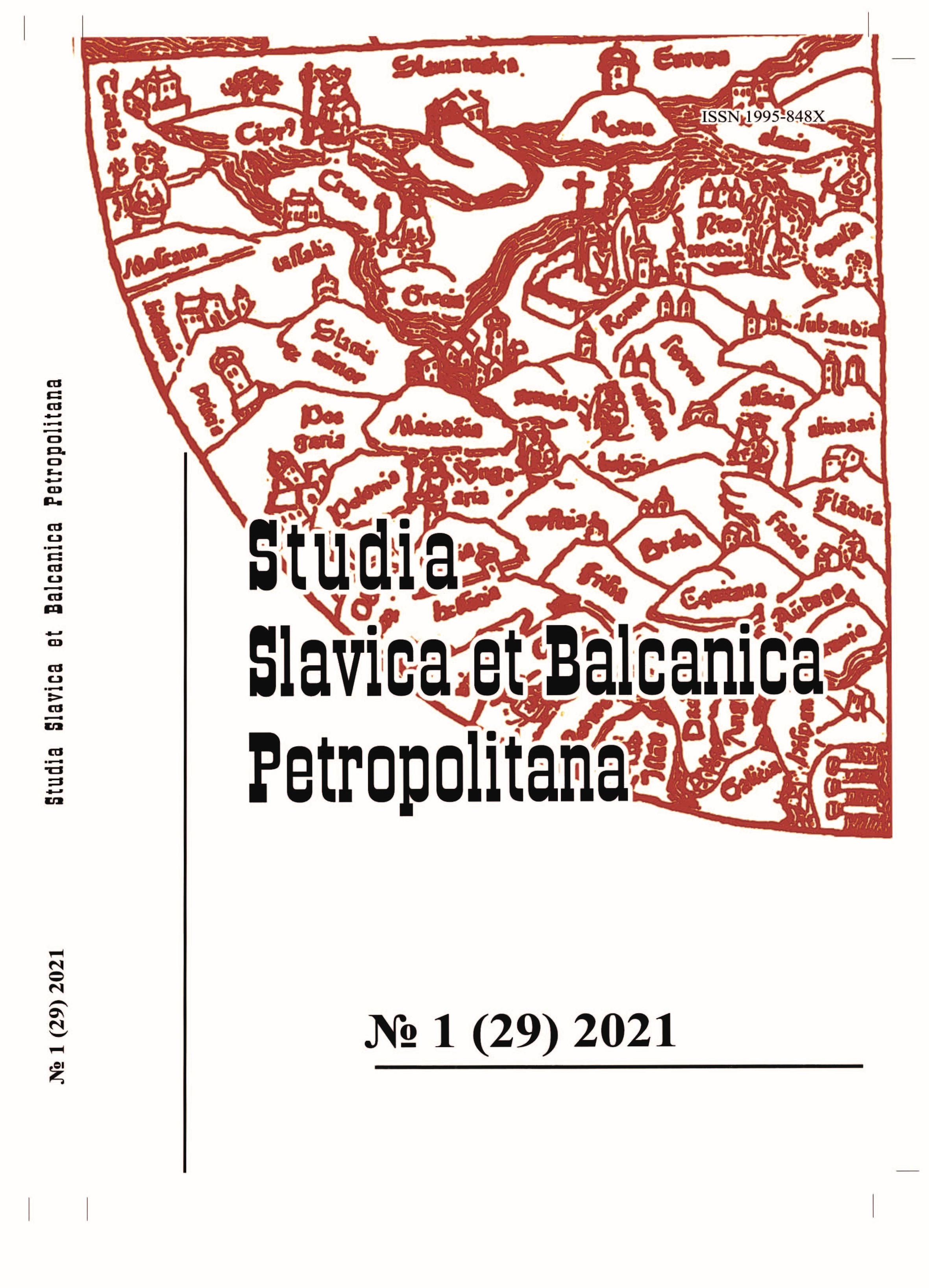
This article presents a study of how women (specifically nuns and abbesses) were perceived in medieval Livonia. Given the significant increase in accessible academic work on the crusading movement in the eastern Baltic, scholarly considerations of the visual culture of this region, and reconsiderations of the roles played by women in the medieval world in general, this article turns from the central regions of the study of Medieval Europe to the periphery. It begins by providing a historical overview of the sources, commenting on the sparsity of specific representations of women in the narrative texts for the Livonian crusades produced in the 13th century. Following this overview, it analyses the representations of women in the vast amount of charter evidence available for the study of Livonia. The first part of the article looks at the ways these institutions were patronized as a result of their intercessory authority. Looking at donations from the 13th to the 15th century, this article also comments on the ways in which private citizens, church officials, and members of the Teutonic Order viewed these intercessory powers. The second part also considers the economic authority gained by these institutions, particularly in the form of land donations. Finally, this article addresses the ways in which women of authority styled themselves in the written documents and depicted their power in the form of visual media, particularly on seals but also in the form of architecture.
More...
The paper focuses on the investigation of the sigillographic sources — pendant wax seals, that belonged to the representatives of Livonian Bishops and Archbishops of Riga. For the investigation, more than 700 pendant wax seals from the Latvian State Historical Archive’s Fund No. 8 — “Archives of Internal Magistrate of Riga” were analyzed. The paper focuses on the wax seals that belonged to the representatives of the Archbishopric of Riga, and representatives of the Livonian Bishoprics. Analysis of the seals of Livonian clergy reveal that several stages can be distinguished in their development. The earliest wax seals that belonged to the representatives of the Livonian clergy display a well-known image – a bishop seated on a throne holding his regalia. For earliest seals it was common to use uncolored wax, these seals mostly were round in shape but the transition to the pointed oval shape took place during the 13th-century. By the middle and end of the 13th-century seals transitioned into use of red wax. During this time also first double-sided seals (where the reverse can be considered as the counterseal) appeared. In this period bishops and archbishops are depicted standing in the church surroundings, indicating the seal owner’s status and rank. In the 14th-century the use of the family coat of arms also appears. Counterseals in 15th-16th-cenuries are used separately as the great seal and counterseal and the depiction used in them represent the importance of the cult of Virgin Mary in Livonia. Nevertheless, Livonian clergymen also used their family coat of arms for self-representation. Medieval religious communities were specialists in symbolization. During the middle ages they adopted and readjusted their own equivalent of self-representation devices used not only in sigillographic sources but also in artistic and architectural works.
More...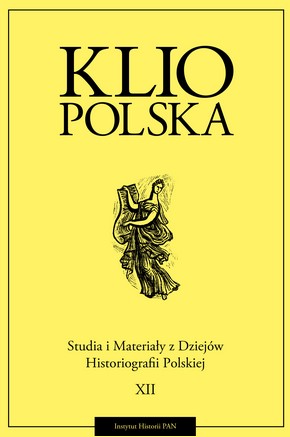
This article presents the person of Daniel Beavois – a distinguished student of the Polish-Russian-Ukrainian relations in the post-partitioned era – and his contacts with the editors of the Paris ‘Kultura’. The author’s concern is also with the question of how Beavois’ work on the Polish nobility in Ukraine in the years 1831–63 was received among Polish post-war exiles, and with Beavois’ postcolonial diagnosis that emerged on the margins of his research and concerned the tensions to which Polish national identity was subject in Poland’s old eastern borderland (the so-called Kresy).
More...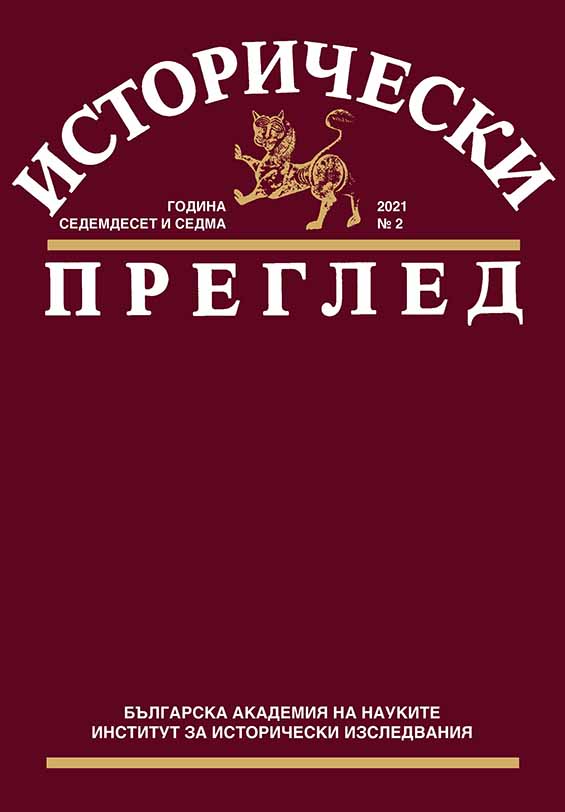
The study presents the strategies of France and Italy to intensify trade with China in the years after Mao Zedong as a starting point for the development of their cultural influence and vice versa; of Great Britain – to increase humanitarian contacts as a prerequisite for its larger trade supplies. As the topic is very broad, the examples that illustrate the described processes are mainly in the field of music and cinema. More attention is paid to China’s acceptance of Western European initiatives. The text traces and analyzes the development of China’s official positions regarding the foreign cultural presence in the country, and could serve as a guide for developing a successful diplomatic practice.
More...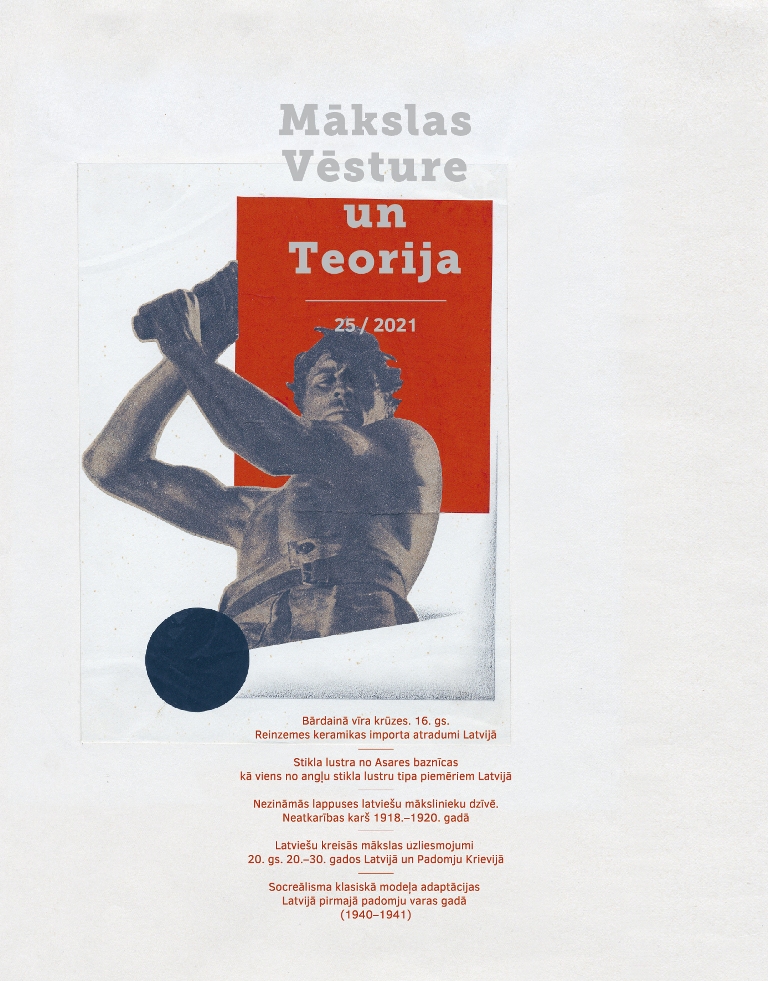
The article focuses on the short Soviet episode between the independence period and the subsequent German occupation, introducing Socialist Realism as a new paradigm for Latvian art theory and criticism. The doctrine had emerged in the USSR during the 1930s and was codified at the First Congress of Soviet Writers (1934) by Stalin’s propagandist Andrei Zhdanov in his famous speech. He proclaimed writers to be “engineers of human souls”. They were urged to represent reality in its “revolutionary development”, educate the working people in the spirit of socialism as well as to use the best achievements of all previous epochs for these purposes.Reflections of the regime’s officials as well as artists, art historians and critics on Socialist Realism appeared in Latvian periodicals by mid-1940. Thus art historian Alberts Prande (1893–1957) reiterated rebukes of formalism from the Soviet press, painter and critic Jēkabs Strazdiņš (1905–1958) extolled the “healthy realist trend” opposed to imitations of Western chaos and liberties; painter Augusts Dīriķis (1894–1941) called for rich ideas and technical skills instead of empty aestheticism, etc. Artists were pushed to depict the new life in “truthful”, content-based works with realist, easily understandable imagery. One of the most theoretical articles was published in the newly founded literature monthly Karogs by the renowned Russian-born art historian Boris Vipper (1888–1967) who came to Latvia in 1924 and returned to Moscow in 1941. He saw Socialist Realism in a quite Hegelian mode. The first phase of cultural evolution was deemed collective idealism, the second – individualism as its antithesis, while the third, present phase of Socialist Realism, described as collective materialism, was said to synthesise both previous extremes and eliminate their worst effects. In terms of form, this collective materialism blended Western traditions of representing spatial depth and chiaroscuro with decorative and rhythmical values, also reintegrating art with practical life and architecture. While this declaration was not really based on the doctrine’s actual sources, it allows us to spot original local modifications. Socialist Realism was popularised in articles praising Russian and Soviet art, for instance, on the Realist trend of the Peredvizhniki (Wanderers). Thus, applied artist and art critic Jūlijs Madernieks (1870–1955) described Ilya Repin as a great model for Latvian artists, modifying his earlier critical remarks about the 19th century Realism. Other Russian artists, such as Vasily Surikov, Aleksandr Deineka or Aleksandr Gerasimov, also featured in periodicals. More general surveys emerged too, mainly extolling the flourishing present in particular kinds of arts. They were authored by the leftist graphic artist Kārlis Bušs (1912–1987), art historian Jānis Dombrovskis (1885–1953), writer, painter and art critic Anšlavs Eglītis (1906–1993) (likely using the pseudonym I. Svarups), also painter and art critic Uga Skulme (1895–1963). Skulme had also sharply changed his opinion about Russian art, now claiming this nation of genius able to blend all foreign influences into a whole while in the inter-war period, he had deemed Russian art slavishly subservient to German Realism. Most of these surveys appeared soon after the occupation, likely aiming to quickly educate the public in the newly conquered territories. Some positive reviews on the USSR cultural scene even predated the occupation for example, in the magazine Atpūta whose editors had been involved with the Society for the Cultural Rapprochement with the USSR, functioning as a de facto recruiting agency for the future puppet government. A different tendency was to speculate on local precursors of Socialist Realism or at least some similar phenomena. Most of these pieces emerged in late 1940 and 1941, suggesting some time was needed in the attempt to inscribe the local heritage into the new paradigm. Self-evident models were members of the so-called Active Artists’ Group related to the inter-war Communist underground, practicing linocuts on social themes in a slightly modernised but rather naïvely realist manner. However, the scope of somewhat acceptable artists was much wider, encompassing the forefathers of Latvian national art, educated in late 19th century Russia and influenced by Realism, such as Ādams Alksnis (1864–1897) or Janis Rozentāls (1866–1916). Expressive draughtsman Teodors Ūders (1868–1915) probably received most attention. He was praised by Skulme, Dombrovskis and others as a simple and convincing interpreter of working people’s lives and thus a true precursor of Socialist Realism. Even artists influenced by modernism were interpreted accordingly; thus art historian Jānis Siliņš (1896–1991) appreciated stage designer and painter Oto Skulme (1889–1967), then the newly appointed rector of the Art Academy, as someone who had luckily abandoned abstract experiments in favour of realism, also being “honest” and “sincere” instead of practicing showy effects. Assessments of the artists’ latest output can be mostly found in reviews of the First Latvian SSR Art Exhibition, which opened in early 1941. For example, Madernieks largely continued his criticism of insufficient optimism, lack of precision in depicting faces, hands and the whole human body, that had been seen already in his articles from the late 1930s. Little was written about Western art during this period, an exception being the French Impressionist Claude Monet. He was described as a “revolutionary” of painting and a sensitive observer of nature in the article by art historian Kristaps Eliass (1886–1963) and painter Ģederts Eliass (1887–1975), who had co-authored a monograph on modern French painting published in 1940. The first Soviet year reveals both continuities and interruptions in regard to the previous period. On the one hand, authors still promoted the traditional neo-realist approach and critique of avant-garde extremes; on the other, they sometimes radically shifted their opinions in favour of Russian art. Most seemingly attempted to somehow “tame” the new doctrine, associating it with established artistic values; these, however, could be exonerated only after Stalin’s death (1953) that started the modernisation and actual disintegration of Socialist Realism.
More...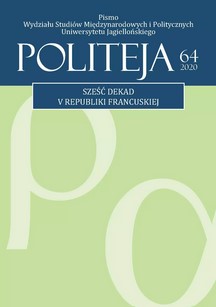
This paper aims to show how the “New Man” was defined in different literary and political conceptions that abounded in Spanish American culture at the turn of the 19th and 20th century. Although both Americas were perceived through the stereotype of newness from the very beginning of the colonial era, it is at the end of the 19th century when the necessity to integrate the extremely heteregenous Spanish American societies brought forth a variety of renewal propositions. Focused on the spiritual or economic aspects of a given social or ethnic group (the elites, implicitly white, for Rodó or the working classes, mostly Indian, for the Indigenistas), those conceptions were not able to provide overall solutions for the Spanish American republics, struggling with a deepening neocolonial dependency. Nevertheless, many tendencies and formulas defined in that period – idealistic or politically subversive – have survived through the 20th century and resurfaced in new forms (e.g. the nuevo hombre bolivariano in Venezuela at the beginning of 21st century).
More...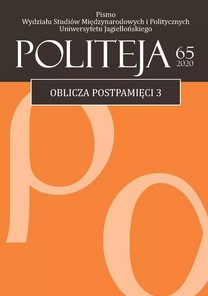
Although originally the term ‘post-memory’ referred to the experiences and memories of the survivors that influenced the biographies of their children, in the following years its meaning was extended and the concept started to be used to describe the processes of transmitting the memory of any traumatic experience within any group, not necessarily bound by blood. In the case of Lublin, where one third of the pre-war community consisted of Jews, most of whom were murdered during World War II, the position of non-Jewish vicarious witnesses seems to be particularly important. This article discusses some aspects of the Holocaust post-memory discourse referring to the cultural activities of the ‘Grodzka Gate – NN Theatre’ Centre. Research questions will concern the artistic language and means of expression of these projects as well as the aesthetic codes that are being used by vicarious witnesses.
More...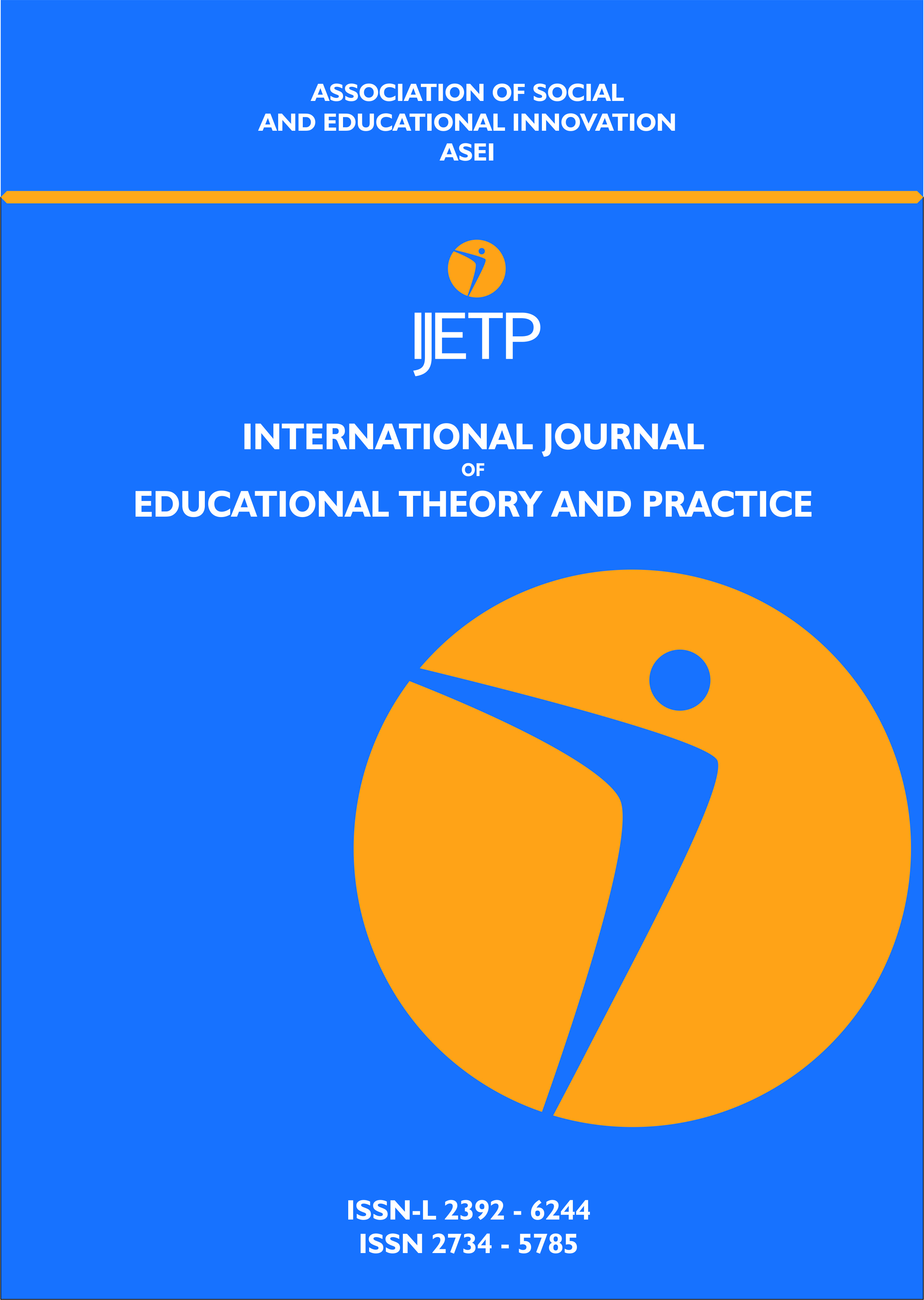
The issue brought into discussion allows, in our opinion, increasing the quality of educational services, reducing early school leaving by children at educational risk, opportunities for the participation of teachers and members of management teams, in continuing education programs, development of teaching and professional skills, activities such as teacher mentoring and exchanging of good practices. In other words, our approach is about how teachers can optimize their teaching activity, so as to reduce school dropout and cause students to be permanently prepared through lifelong learning.
More...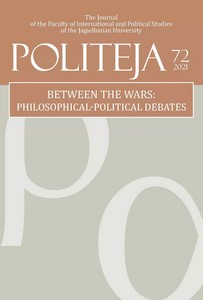
In this paper the author tries to answer the question of what factors caused the great German author Thomas Mann to accept the official goals of World War I by focusing on his Reflections of a Non-political Man. It also discusses Thomas Mann’s disagreements with his brother Heinrich Mann and his polemics with the ideas specific to the mainstream liberal thinking. Additionally, the article considers the context of the Polish reception of Thomas Mann. The author also discusses the problem of the topicality of the writer‘s attitude.
More...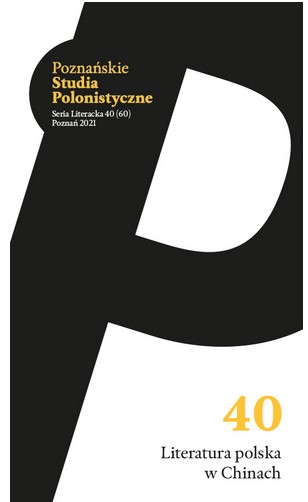
In this article devoted to the independent culture in Polish People’s Republic, I put into dichotomic doubt the concept based on the clear division between the official and independent culture. The forms of creative activity that escaped the state censorship between 1976 and 1989 radically disrespected the directives of the state’s cultural policy, yet many years before the emergence of ‘the second circulation’, there were already numerous initiatives that sparked a rich spectrum of independent activity. The authors’ strategies to remain independent changed over time, to varying extent distanced the authors from the official artistic life and differed depending on the character of the authors’ intellectual activity. In the article, I attempt to prove the relatively weak influence of the ‘official dependent culture’ that fully respected the authorities’ instructions, and I propose a classification of creative strategies that also emerged in the official culture and allowed for a relatively free development of art and science. Using multiple examples from literature, cinema, visual arts, music and science, I discuss ‘controlled culture escaping the ideological instructions’, ‘official niche culture’, ‘culture confronting the limitations’, ‘licensed Catholic culture’, ‘second circulation culture’ and ‘third circulation culture.’ The practice of searching for a way out of the official one-dimensionality allowed Polish cultural identity to continue and save its most valuable intellectual and artistic values.
More...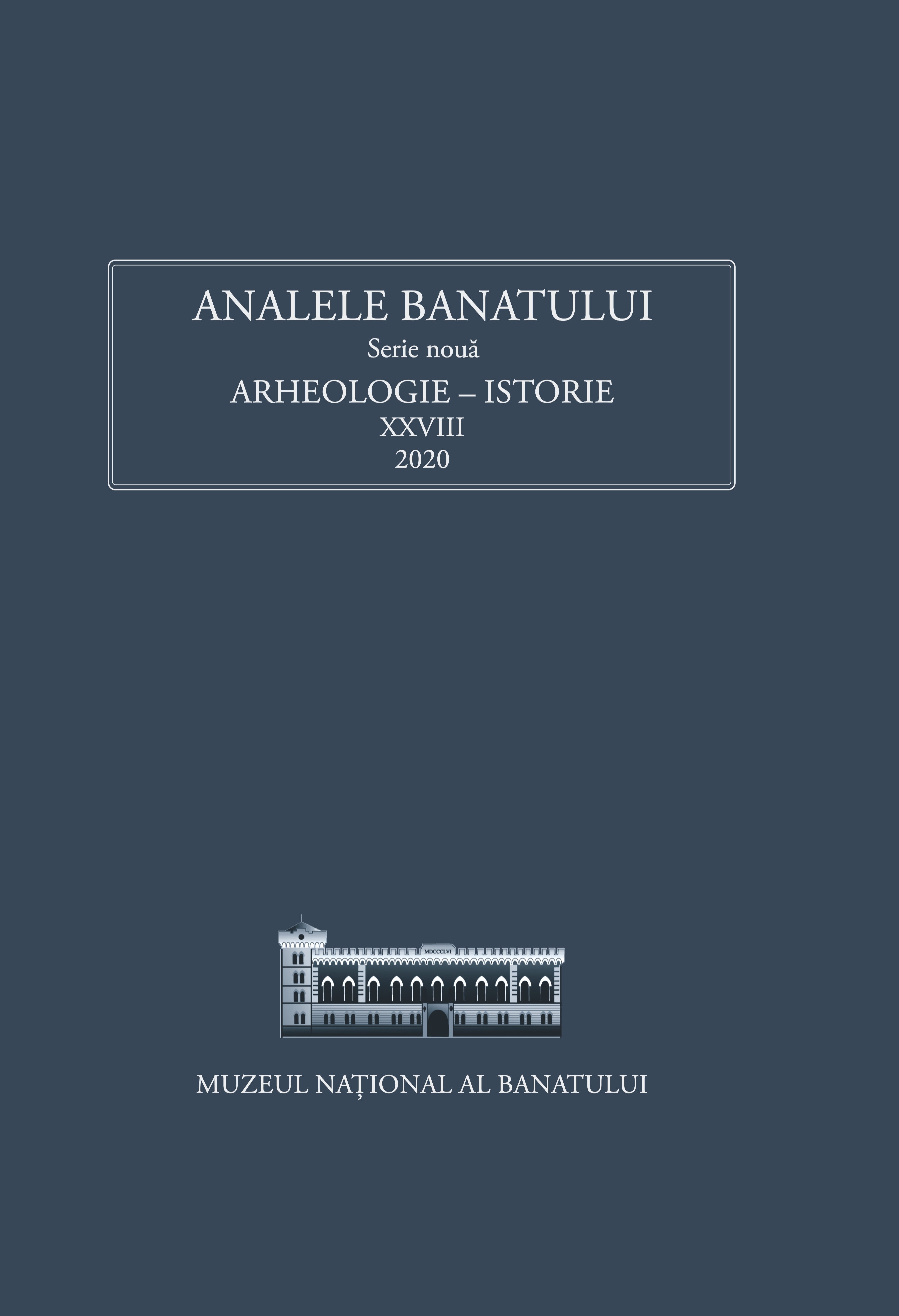
Mindszenthy Antal (1786-1859?) was a Hungarian erudite who travelled across Europe and Hungary, leaving behind a diary about his trip across the Hungarian Plane. The first part of his descriptions was published in 1831 and 1832, but due to the censorship of the period, the second part of his manuscript, the description of his trip from Titel to Pest, was not allowed to be printed. The diary of Mindszenthy is kept in the Széchenyi National Library from Budapest, Hungary and was entirely published recently by the Katona József Museum from Kecskemét. Due to the fact that the travel route included regions of Banat that are to be found today within the borders of Romania, one of the stops being the center of the region, namely Timișoara, we thought it would be of great interest to publish the description of the city, both in Hungarian language and translated into Romanian. Timișoara has underwent several reconstructions through the centuries (and it witnessed three major sieges in 1551/1552, 1718 and 1849), consequently the major part of it’s architectural heritage dates from the end of the 19th century, but especialy from the beginning of the following century. Such narrations from eye whitnesses are very scarce in the first part of the 19th century, a period when illustrations are as well extremely rare. A local priest, Nicolae Stoica de Hațeg has written his chronicle about the region of Banat a few years after Mindszenthy, between 1825-1827. Apparently for both of them the work of Francesco Griselini stood as a modell. The original text has been adnoted with comments and interpretations of the authors in order to establish the veridicity of the descriptions and to provide further information regarding the subject of the account. Since the diary did not included any illustration, for a better understanding we completed it with several images representing either the city plan or buildings, mainly dating from the 19th century or earlier, trying to illustrate the descriptions as faithfully as possible.The text also offered the authors the opportunity to discuss about some historical relics it refers to: an ottoman inscription that was inaccurately translated until now, the Horros Kapi (Rooster or later Forforosa Gate) of the Ottoman fortification of Timișoara and a presumably medieval flag kept in the artillery warehouse.
More...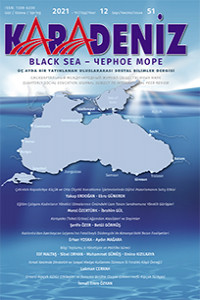
There are people of other ethnic origins besides Georgians among the citizens of Georgian state, whose way of life, daily needs and cultural aspirations are formed and developed in this country. However, in many cases, due to confessional, ethnocultural and linguistic differences, signs of certain types of marginalization may appear. Thus, in order to ensure the unity of the population, it is necessary to overcome all the obstacles that hinder the rapprochement of citizens. One of the most important barriers on this path is the issue of language competence. Universal knowledge of the state language is an indispensable condition for success. As it is known, the sovereignty of a country depends on the strength of the state language, care for the language, its protection and popularization is a prerequisite for the strength of the state. Therefore, the language problem in the country clearly indicates a lack of civic integration. The only guarantee of civic unity is language, at least people should understand each other, to put it simply, they should speak on "one language". Today, the main priority of the state is to integrate the population of the country into a single social space, and this path goes through the possession of the state language. Armenia is one of the bordering countries of Georgia, therefore it is natural that Armenians have historically moved easily between Georgia and Armenia, and in many cases they have settled and settle for work. The migration of Armenians in the past often had the character of evacuation from military or ecological disasters, trade and other economic interests, etc. Under the Soviet Russification policy and the regime of restricting the independence of the republics, the non-Georgian-speaking population included people, who were legally citizens of Georgia, but mentally they turned out to be an unclear civic identity Even after the collapse of the Soviet Union, the process of civic integration became more complicated. There are several reasons for this: • Low motivation of non-Georgian speaking population to study Georgian language; • Lack of state will; • The state qualifies Georgian as a "second language" for non-Georgian-speaking Georgian citizens, thus reducing the motivation of this population; • Low qualification of Georgian language teaching guides and teachers; • Imperfection of Georgian language teaching methods.
More...